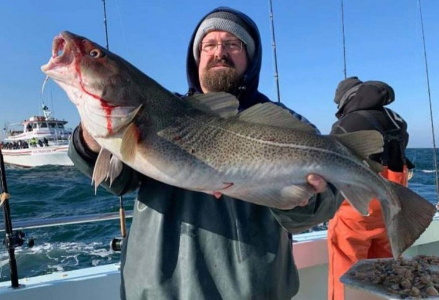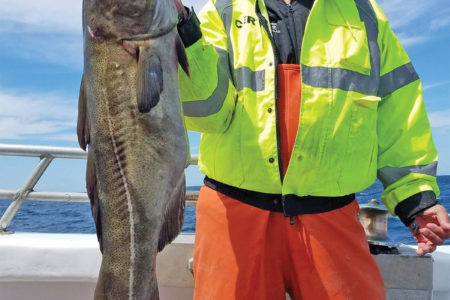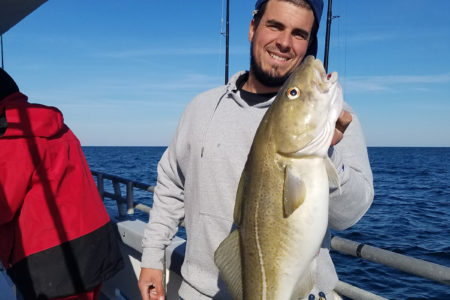Large, seaworthy boats ready to take advantage of good weather can make the most of these windows of opportunity.
With two large, calloused hands the size of catchers mits, he cradled the bottom of the double paper bags, dripping wet from the liquid that oozed from its contents and stated, “Wasn’t a single galvanized bucket to be had so he stuffed the fillets into the grocery bags and told me to give them to you.” Manuel worked as a foreman on the estate farm of the Haffenreffer’s (Narragansett Brewing Company) family farm in Little Compton which was adjacent to the fish traps set at the mouth of Rhode Island Sound. He was friendly with the crew from the trap house that appreciated his gifts of baked goods which his wife bartered for their fresh fish.
“So it looks like the cod are working their way inshore a bit early this year, are you ready to make a trip?” asked the caretaker. The big farm hand answered in the affirmative and they began to make plans for the long trip up the river to the productive ocean rockpiles. That was long before the draggers had decimated their deep-water bounty and moved inshore, and before the gill nets were set along the craggy bottom those where boats couldn’t safely drag their nets over. The caretaker reached up for one of the big commercial dinner plates the Bridge Diner discarded when the chips began to nick the hands of their customers which we scooped up like we’d won the lottery.
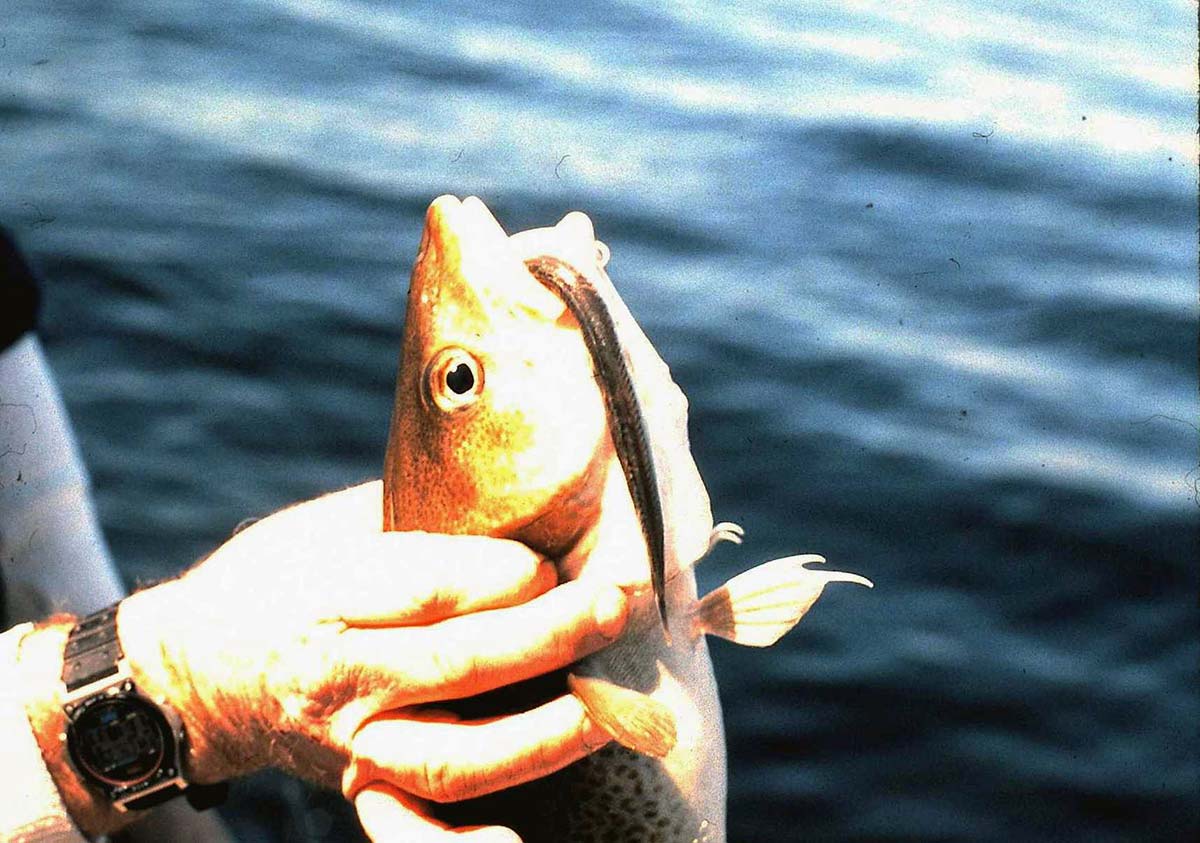
“Get the medicine boy, we’ve got something to celebrate!” bellowed the caretaker. Back then there was seldom a lack of medicinals in the form of homemade brandy, brewed in the homemade still set on the dirt floor cellar of Blondie’s nearby three family tenement house. There were a few nearly-empty bottles of that “medicine” in the kitchen cabinet, but the main supply was on the bottom of the caretaker’s locker behind his oars, gas cans and under a half section of a WW II cork life jackets. I was one of few who knew of this stash, and it was never unearthed in the presence of other eyes. He put a nickel in the soda can, told me to get myself a bottle of RC, and began refilling his stash so I could secure it before anyone else showed up. I washed my hands with pungent Octagon soap and peeled the brown paper from the heap of fillets in the deep dish. The men tipped their glasses and began to grin because early cod was a boon to those nearshore fisherman. I sipped my long-neck cola while my mentors made their plans. I went home carrying two thick fillets for my mom, and more importantly an invitation to join then on a Sunday morning; I was walking on air.
Long before graphite rods, braided line, circle hooks and the internet there were nearly a dozen members mulling around on the dock pulling on their pipes, cigars and hand-rolled cigarettes. I climbed aboard the rugged 18-footer with Manuel, the caretaker and one man I had never met. Turns out he was one of the trap fishermen who had a bearing on where we might find the cod. The reliable 15-HP Scott Atwater started on the third pull, and after a cloud of black smoke she settled down and pushed us along smartly for roughly 24 miles to a ledge off Newport in about 50 feet of water. On the steam out Manual and our guest shucked well over a bushel of sea clams and readied the handlines in preparation of our arrival. What transpired is still a blur of drop-and-haul fishing for an almost non-stop morning.
Eventually my growling stomach began to remind me that it had been over eight hours since I guzzled down cereal and milk, so I took a break to eat a PB&J when the caretaker erupted, “What the hell happened to all the clams?” Lord forbid, we were out of bait. The men had to remove dozens of cod, tautog and quite a few dinner-plate scup from the live nets before they could haul them over the side. I slept all the way back to the club and was rewarded with a pile of fillets as my share, but after that bonanza I was never invited on one of those trips again as the old-timers took preference over the errand boy. The resurgence of cod caused a run and limited the number of seats available on local boats heading for the cod grounds.
That was then and this is now.
After an encouraging period there came additional pressure mounting on inshore cod stocks which began to hit rock bottom with such traditional cod grounds as Southwest Ledge off Nomans, the rocky structure offshore from Newport, and the waters off Plymouth and Manomet. Those locations, which could be reached by small craft with the reasonable expectation of catching a few cod for the table, began to dry up. The whiskered winter king became such a rarity that it prompted the employees and local patrons of the trap companies to hoard the few that were netted. We then suffered through a prolonged period when catching a cod while bottom fishing became a curiosity, one that most fishermen kept to themselves with the hope that they might repeat this anomaly on their next trip to those grounds.
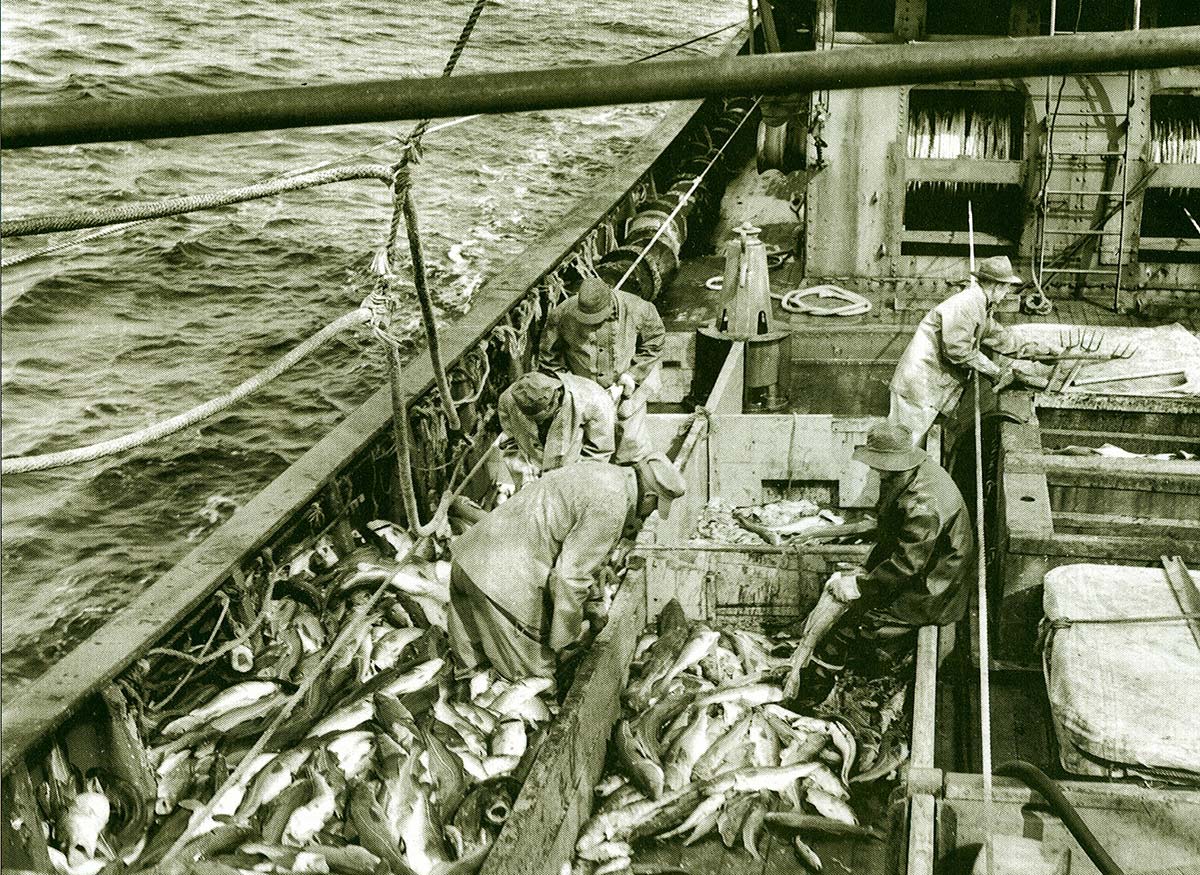
In the mid-1980s I overwintered my boat in Scituate Harbor, and on those days when I wasn’t shoveling snow out of the cockpit we were jigging up cod in water less than 100-feet deep just a few miles from the entrance. Every year we ran into more gill nets and less cod until we gave up on what began as a very worthwhile fishery. At about that time the recreational cod fishery was nothing but a fond memory. About a dozen years ago, while compiling my weekly fishing reports, I began to hear about cod being caught as a bycatch in the tautog, black sea bass and scup fisheries. Many of those cod were legal sized in the 4- to 7-pound class with the occasional steaker like the 31-pounder Fred Souza caught in late June last year off Westport while sea bass fishing. Although most of my spring and early summer fishing is in relatively shallow water, we began accounting for up to a dozen cod from 18 to 28 inches; these were white bellies and not the reds that are often referred to as year-round groundskeepers. Many more members of the recreational and six pack charter fleet began reporting and displaying images of cod mixed-in with their bottom fishing catches. Those of us who had lived through the periods of abundance to devastation began to experience quiet optimism that cod might become more than just an occasional bycatch.
Up until the event of his untimely death, former Fisherman editor, Tim Coleman would begin calling me in late February, prodding me to de-winterize the boat so we could begin the pre-spring forays we had been making into Rhode Island Sound, Browns Ledge, Vineyard Sound, and in better weather; Nomans Island for early-season cod. In all the years since we began those ventures I can’t recall a single one where we didn’t catch enough cod to share with family and friends, and on a few occasions we had great numbers and sizes primarily in the 5- to 8-pound class. That early in the season I insured that we had fresh sea clams aboard, although Tim preferred the “iron clams” which was how he referred to his jigs. He did as well, and occasionally better with bigger cod than me using a double-hook cod bait rig. Every day from October to Christmas the charter and private boats that are tautog and black sea bass fishing where legal are catching legal cod as a bonus.
One frigid Thanksgiving weekend several years ago I joined my friend Jimmy the Greek on a tog and scup trip out of Point Judith. He trailered down from Gloucester to launch, and we broke through the breakwater into a pretty stiff wind. We steamed a few miles out and set up on a rocky piece of bottom east of but in sight of Block Island and proceeded to hammer black sea bass, scup and tautog. There were four of us at the start, but before long there was only the skipper and I standing as our two deckmates succumbed to serious cases of sea sickness. The unexpected bonus was a load of legal cod. We returned at dusk, and Jimmy left me with a tote full of fish. It was so cold I spent two hours on my kitchen cutting board filleting cod, tog and a few dinner-plate scup for my friends who preferred them over any other species that swims. I believe an experienced skipper with a seaworthy boat could duplicate a day like that by sailing out of Westport, Sakonnet, Newport Harbor or Point Judith today. I personally would not make that trip unless I had another, preferably two other sizable boats along for safety sake and to cover a larger area. Jimmy the Greek fished for cod on a year-round basis, and one of his best catches was in February during the Boston Boat show when he visited us with a tray of fresh cod fillets.

